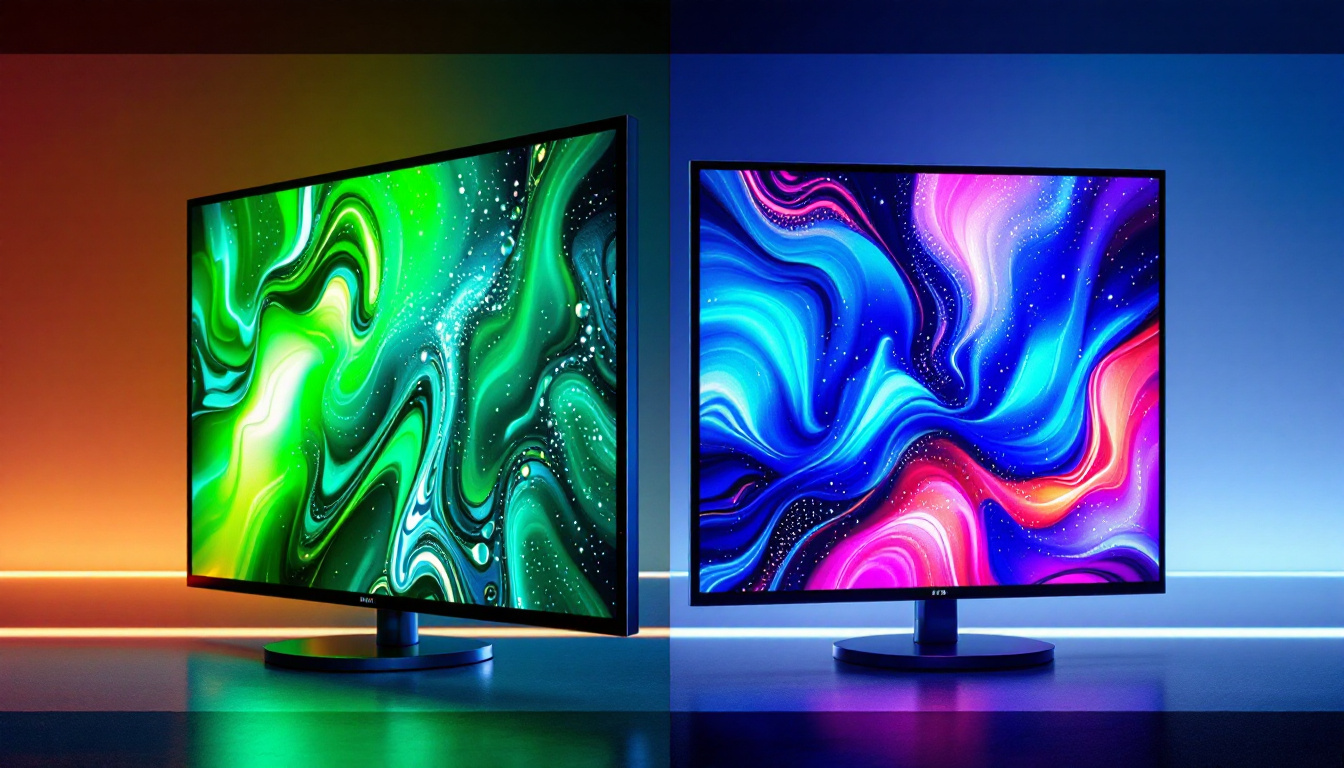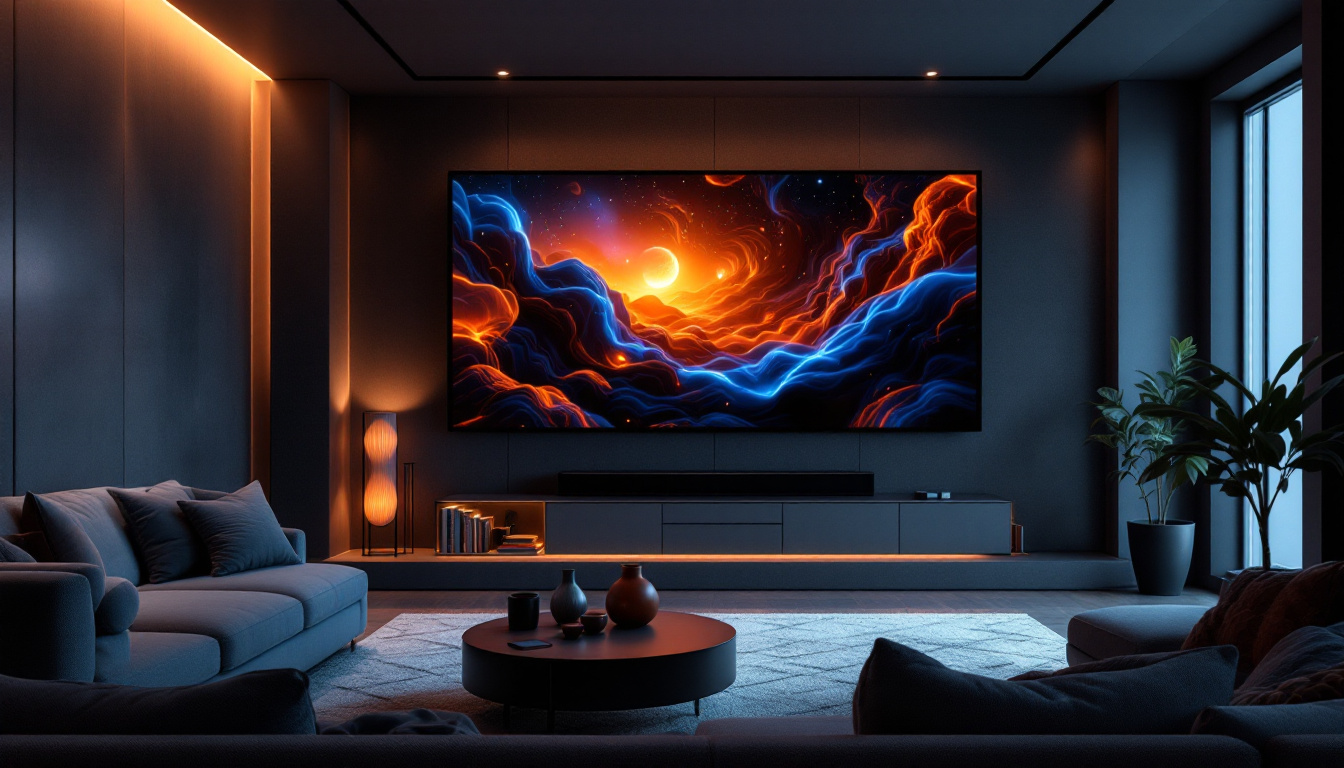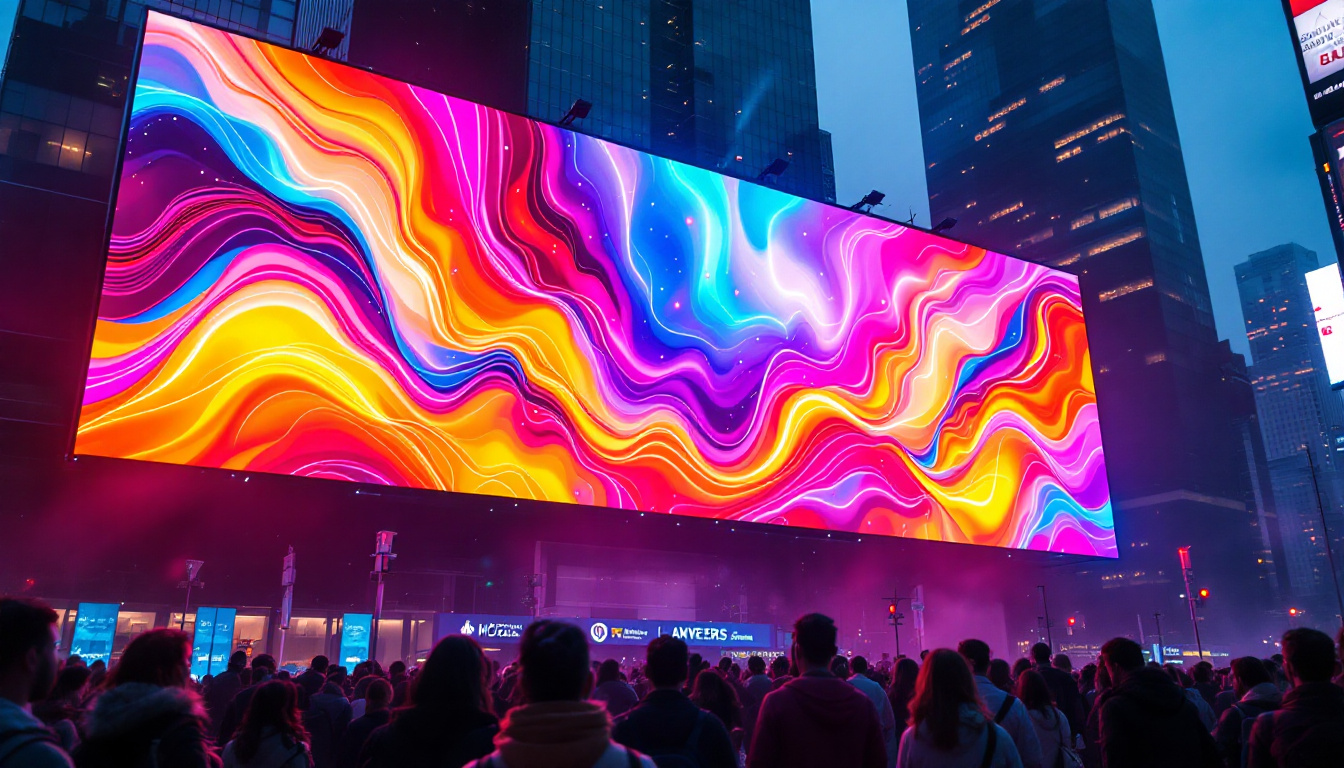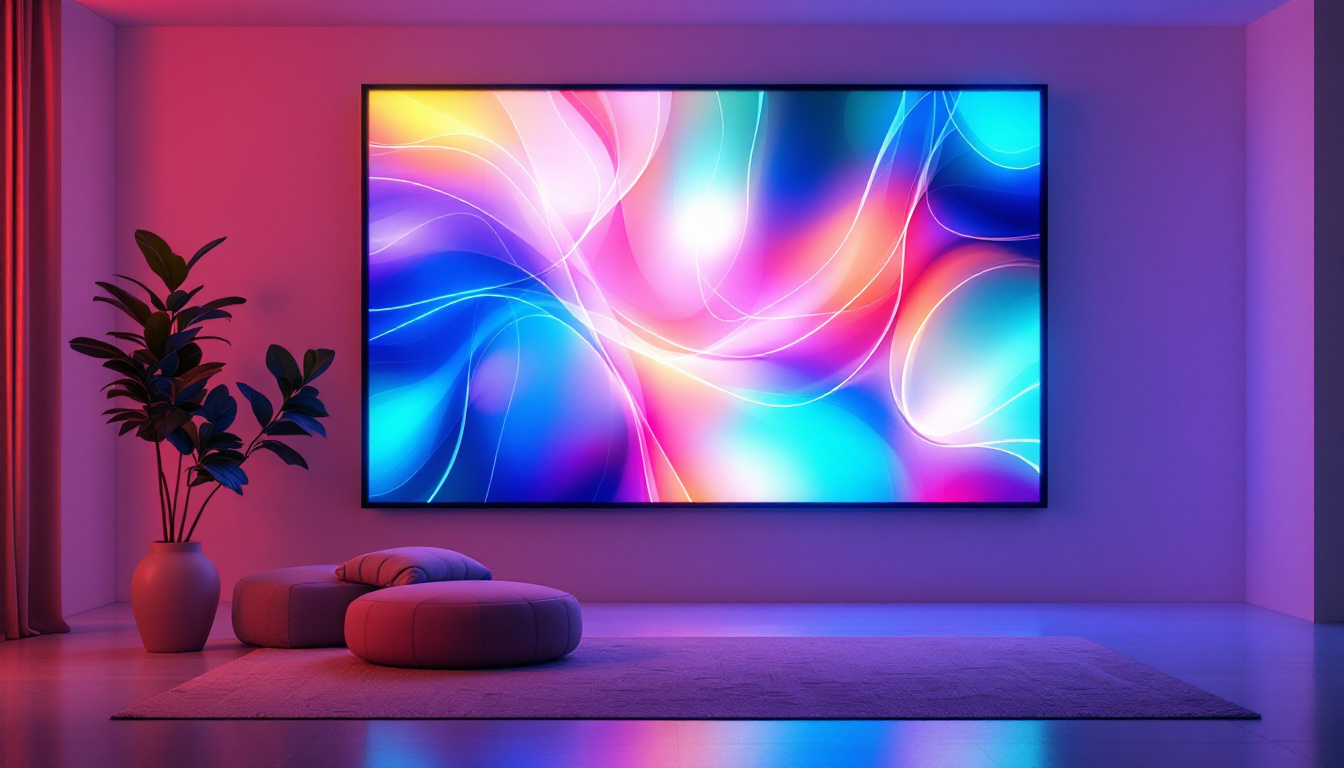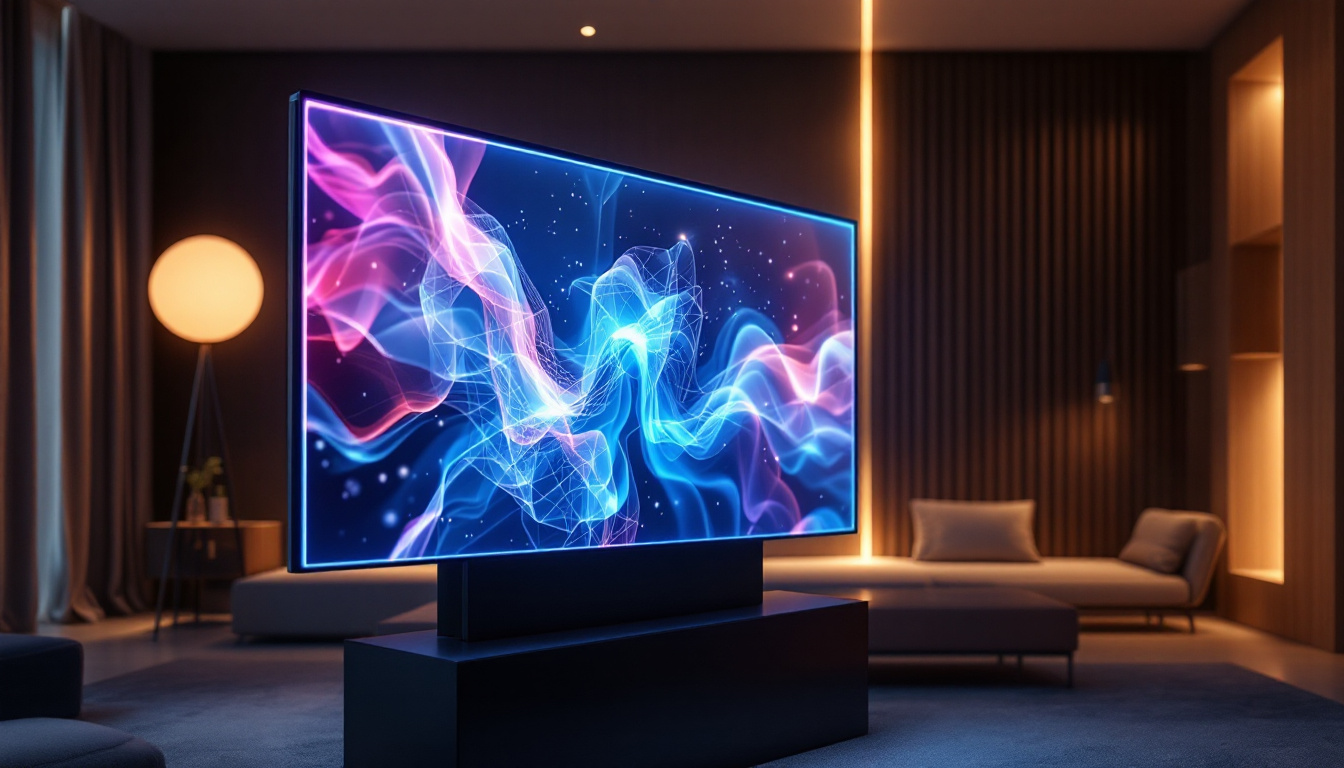In the world of display technology, two terms often come up in discussions: OLED and LED. Each has its unique features, advantages, and drawbacks. As consumers become more discerning about their viewing experiences, understanding the differences between these technologies has never been more important. This article delves into the characteristics of OLED and LED displays, helping you determine which might be the better option for your needs.
Understanding LED Technology
Light Emitting Diode (LED) technology has revolutionized the way we experience visual content. It is widely used in televisions, computer monitors, and even mobile devices. But what exactly is LED technology, and how does it work?
How LED Displays Work
LED displays utilize a series of diodes that emit light when an electric current passes through them. These diodes can be arranged in various configurations, including backlighting for LCD screens or as standalone displays. The most common type of LED display is the LCD (Liquid Crystal Display) that uses LED backlighting to enhance brightness and color accuracy.
In LED-backlit LCDs, the liquid crystals do not emit light themselves; instead, they manipulate the light from the LEDs to create images. This combination allows for thinner screens and improved energy efficiency compared to traditional LCDs that use fluorescent backlighting. Furthermore, advancements in LED technology have led to the development of quantum dot displays, which utilize nanometer-sized semiconductor particles to enhance color reproduction, resulting in a more vibrant and lifelike viewing experience.
Types of LED Displays
There are several types of LED displays, each with its own advantages. The most notable include:
- Edge-Lit LED: LEDs are placed along the edges of the screen, allowing for a thinner design. However, this can sometimes lead to uneven brightness.
- Direct-Lit LED: LEDs are placed directly behind the screen, providing more uniform brightness and better contrast.
- Full Array LED: This type uses a grid of LEDs across the entire screen, allowing for local dimming and improved black levels.
In addition to these, there are also OLED (Organic Light Emitting Diode) displays, which have gained popularity due to their ability to produce true blacks and a wider viewing angle. Unlike traditional LED displays, OLED panels emit their own light, which allows for individual pixels to be turned off completely, resulting in stunning contrast ratios and vibrant colors. This technology is particularly favored in high-end televisions and smartphones, where visual fidelity is paramount. Moreover, the flexibility of OLED technology has led to innovative designs, including curved and foldable screens that cater to the evolving needs of consumers.
The Advantages of LED Displays
LED displays come with several advantages that have contributed to their popularity in the market. Understanding these benefits can help consumers make informed decisions.
Brightness and Color Accuracy
One of the standout features of LED displays is their ability to produce bright images. This makes them particularly effective in well-lit environments, where other display technologies may struggle. Additionally, advancements in LED technology have improved color accuracy, allowing for vibrant and lifelike images. The high contrast ratios achieved by LED displays enhance the viewing experience, making them ideal for applications such as digital signage, where capturing attention is crucial. Furthermore, the ability to adjust brightness levels dynamically means that LED displays can maintain image quality across varying ambient light conditions, ensuring that content remains visible and engaging at all times.
Energy Efficiency
LED displays are known for their energy efficiency compared to older technologies. They consume less power, which not only reduces electricity bills but also contributes to a smaller carbon footprint. This efficiency is especially beneficial for larger screens used in commercial settings. Businesses can significantly cut operational costs while also promoting sustainability by opting for LED technology. Moreover, the reduced heat output of LED displays means that they require less cooling, further enhancing their energy-saving capabilities. As a result, many companies are now incorporating LED displays into their marketing strategies, leveraging their eco-friendly attributes to appeal to environmentally conscious consumers.
Longevity and Durability
LED displays typically have a longer lifespan than traditional LCDs and are more resistant to damage. This durability makes them a preferred choice for various applications, from home entertainment systems to outdoor signage. Unlike fragile glass screens, LED displays are constructed with robust materials that can withstand harsh weather conditions, making them suitable for outdoor advertising and events. Additionally, the low maintenance requirements of LED technology mean that users can enjoy extended periods of reliable performance without frequent replacements or repairs. This reliability is particularly advantageous for businesses that rely on continuous operation, as it minimizes downtime and ensures that promotional content is consistently displayed to the public.
Exploring OLED Technology
Organic Light Emitting Diode (OLED) technology represents a significant advancement in display technology. Unlike LED displays, OLED panels emit their own light, allowing for a different approach to image rendering.
How OLED Displays Work
OLED displays consist of organic compounds that emit light when an electric current is applied. Each pixel is made up of individual diodes that can turn on and off independently. This capability allows OLED displays to achieve true blacks and a wider color gamut.
Because OLED panels do not require backlighting, they can be made thinner and more flexible than their LED counterparts. This flexibility has led to innovative designs, such as curved and bendable screens.
Types of OLED Displays
There are two main types of OLED displays:
- Passive Matrix OLED (PMOLED): This type is simpler and used in smaller screens, such as those found in wearables or small electronic devices.
- Active Matrix OLED (AMOLED): This type is more complex and used in larger displays, such as smartphones and televisions. AMOLED screens offer better refresh rates and color accuracy.
The Advantages of OLED Displays
OLED displays have garnered attention for their impressive capabilities. Here are some of the key advantages that set them apart from LED displays.
Superior Contrast and Black Levels
One of the most significant advantages of OLED technology is its ability to produce true blacks. Since each pixel can turn off completely, OLED displays can achieve an infinite contrast ratio. This feature enhances the viewing experience, especially in dark scenes, making details more pronounced.
Wider Viewing Angles
OLED displays offer wider viewing angles compared to LED displays. Colors and brightness remain consistent even when viewed from the side, making them ideal for group viewing situations. This characteristic is particularly beneficial for home theaters and shared entertainment spaces.
Faster Response Times
OLED technology allows for faster response times, reducing motion blur during fast-paced scenes. This makes OLED displays particularly appealing for gamers and sports enthusiasts who require smooth and fluid visuals.
Comparing OLED and LED: Which is Better?
When it comes to choosing between OLED and LED displays, several factors come into play. Each technology has its strengths and weaknesses, and the decision often depends on individual preferences and use cases.
Price Considerations
Generally, OLED displays tend to be more expensive than their LED counterparts. The advanced technology and manufacturing processes involved in producing OLED panels contribute to the higher price point. For budget-conscious consumers, LED displays may provide a more accessible option without sacrificing too much quality.
Use Cases and Preferences
For those who prioritize picture quality, especially in darker environments, OLED displays are often the preferred choice. Their superior contrast and color accuracy can significantly enhance the viewing experience for movies and high-definition content.
On the other hand, LED displays may be more suitable for brightly lit environments or for users who require larger screens at a lower price point. They are also a solid choice for general-purpose use, such as gaming or casual viewing.
Potential Drawbacks of Each Technology
While both OLED and LED displays have their advantages, they also come with potential drawbacks that consumers should consider.
Drawbacks of LED Displays
Despite their many benefits, LED displays can suffer from issues such as uneven brightness and limited contrast ratios. In darker scenes, black levels may appear grayish, which can detract from the overall viewing experience. Additionally, some LED displays may struggle with color accuracy, particularly in lower-end models.
Drawbacks of OLED Displays
OLED displays, while offering exceptional picture quality, are not without their challenges. One major concern is the potential for burn-in, where static images can leave a permanent mark on the screen over time. This issue is particularly relevant for users who frequently display static content, such as logos or user interfaces.
Furthermore, OLED technology can be more vulnerable to degradation over time, particularly in blue pixels, which may lead to color imbalances in older displays.
Conclusion: Making the Right Choice
Choosing between OLED and LED displays ultimately depends on personal preferences and specific use cases. For those who prioritize picture quality, especially in dark environments, OLED technology shines with its superior contrast and color accuracy. However, for budget-conscious consumers or those in brightly lit settings, LED displays offer a reliable and cost-effective option.
As technology continues to evolve, both OLED and LED displays are likely to see advancements that may further blur the lines between them. Staying informed about the latest developments can help consumers make educated decisions when investing in display technology.
In the end, whether opting for OLED or LED, understanding the strengths and weaknesses of each technology is crucial for making a choice that aligns with individual needs and preferences. The right display can significantly enhance the viewing experience, making it well worth the consideration.
Discover the Future of LED Displays with LumenMatrix
As you consider the advantages of OLED and LED technologies for your viewing needs, remember that innovation doesn’t stop. LumenMatrix, a pioneer in LED display technology, is at the forefront of creating immersive visual experiences. Whether you’re looking for Indoor LED Walls, Outdoor Displays, or specialized solutions like Vehicle and Sports LED Displays, LumenMatrix has a range of products designed to bring your content to life. Embrace the future of visual communication with LumenMatrix’s advanced LED solutions that promise to captivate your audience and amplify your message. Check out LumenMatrix LED Display Solutions and see how they can transform your space today.

